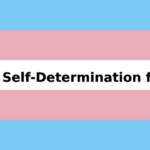Should Schools Be Prohibited from Informing Parents of a Child’s Change in Gender Identity?

The youth transgender debate has flared up across the United States and beyond in recent weeks, with the state government of California passing legislation which prohibits schools from requiring teachers and other staff members to inform parents of the gender identity or sexual orientation with which their children identify at school.
The controversial law
The new law was signed off by Californian Governor Gavin Newsom on the 15th of July this year.
It essentially bans schools from setting policies that require staff members to notify parents if their child asks to change their gender identification.
California is the first of the united states to do this, but the move has triggered debate in jurisdictions as far as right here in Australia.
Protecting youth rights
The law is touted as protecting youth rights, supporting transgender, gender nonconforming, and nonbinary students. However, many see it differently – as state overreach and a violation of the rights of parents. Many parents say they would prefer to be involved in conversations, rather than for their child to have them, unescorted, with a teacher.
It is a highly contentious issue, and not isolated to California, or the US.
By way of background, more than a dozen school districts in California have policies requiring staff to notify parents if their child identifies as transgender, or asks to go by a different name or pronoun.
However in one district, this policy attracted a lawsuit from the state’s attorney general last year, who argued that it violated the state’s constitutional guarantee of equal protection, privacy, and the fundamental right to education.
Now, under the new law, educators will only be able to inform parents with a child’s consent to do so. And educators must provide resources for families to discuss gender identity.
What about New South Wales?
The New South Wales Department of Education determines that transgender, non-binary and gender non-conforming students have a right to be treated equitably and with dignity. The details of how this is applied are outlined in the Department’s Student Welfare Policy and the Bullying: Preventing and Responding to Student Bullying in Schools Policy.
Additionally, the New South Wales Department of Education acknowledges that schools have a legal duty to protect students from foreseeable risk of harm and to do what is ‘reasonably practicable’ to ensure their safety.
A student who has identified as transgender enjoys the same legal rights or protections afforded to all students which are not set out in one overarching piece of legislation, but which are covered in several different pieces of legislation which cover duty of care, education and work health and safety.
Information about any student is protected under two laws, the Privacy and Personal Information Protection Act 1998 and also the Health Records and Information Privacy Act 2002
Discrimination laws
Students are also protected by discrimination laws.
The Transgender (Anti-Discrimination and Other Acts Amendment) Act 1996 was passed by NSW parliament in June 1996. The legislation amended the state’s Anti-Discrimination Act 1977 to make discrimination and vilification on transgender grounds unlawful.
The bill also amended the Births, Deaths and Marriages Registration Act 1995 to allow for a change of sex on a birth certificate. This can lawfully be done if an individual has their birth registered in NSW, is over the age of 18, has undergone gender affirmation surgery and is not married.
New South Wales is the only state in Australia which still does not have what is known as ‘self-nomination.”
Currently, the rules stipulate that transgender people must supply statutory declarations from two Australian doctors verifying sexual reassignment surgery, or appropriate medical procedures which indicate a serious intention to undergo gender reassignment, have taken place.
There have been calls for quite some time to change this, not just because people who have not had the surgery, or have no intention of undergoing gender reassignment surgery (which can be expensive and take multiple procedures over a long period of time) but still identify as a different gender than that nominated at birth can face discrimination, but also because a birth certificate is considered a fundamental piece of identification.
It is often a preferred piece of identification and if it doesn’t match other forms of identification it can be problematic, even when it comes to the most basic things, such as applying for a loan.
At what age can a person start gender reassignment treatment in Australia?
In Australia, gender reassignment can commence for young people under the age of 18 if there is no dispute between legal parents / guardians and the young person, and the young person’s medical practitioner with regard to:
- a diagnosis of gender dysphoria
- proposed treatment
- the young person’s comprehension of the process and capacity to consent.
An important judgment in the case of Imogen in September 2020, determined that a court order, authorised by the Family Court, can provide a doctor with the authority to administer puberty blockers, hormones or surgical intervention where parents / guardians have not provided consent.







